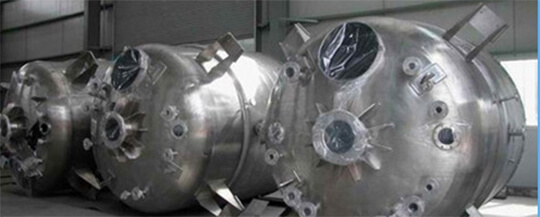Composite materials are materials with new properties that are combined by physical or chemical methods with one material as the matrix and the other as the reinforcement. The base material can generally be divided into two categories: metal base and non-metal base. Commonly used metal substrates are aluminum, copper, titanium and their alloys. Commonly used non-metallic substrates are carbon, rubber, synthetic resin, ceramics and so on. Reinforcing materials usually use carbon fiber, glass fiber, aramid fiber, etc.
With the depletion of energy in contemporary society, countries are actively developing and using clean and renewable new energy sources, such as compressed natural gas and hydrogen. These clean energy sources require pressure vessels during storage and transportation. Traditional pressure vessels are mostly made of metal materials. The lining material of the vessel is usually made of alloy steel with good corrosion resistance, and the outer layer is wrapped with a metal laminate to improve the strength of the vessel and meet the performance requirements. However, metal materials have many shortcomings, such as high density and high cost, which bring many difficulties to industrial manufacturing. Since the 1940s, composite materials have developed rapidly, especially in cutting-edge fields such as aviation and aerospace. The performance requirements of aerospace devices have become higher and higher, which has promoted the development and application of composite pressure vessels.
Features of composite pressure vessels
1. Low density
The matrix material of the composite material is usually polymer, ceramic, etc., and the density is relatively small, and the density value of the composite pressure vessel made by fusion with the reinforcing material will not be very large;
2. High mechanical strength
At present, some fiber products (including carbon fiber, glass fiber, aramid fiber, etc.) are mainly selected as reinforcement materials for composite materials at home and abroad. The composite pressure vessel contains a large number of reinforcing fibers. When a small number of fibers break due to excessive internal pressure and lose the load-bearing capacity, other undamaged fibers will redistribute the load so that the entire container will not lose its load-bearing capacity in the short term Ability: Because the fiber material itself has high strength and good deformation performance, its comprehensive performance will be greatly improved after being combined with the matrix material. The composite pressure vessel made has the advantages of light weight, high strength, and good rigidity;
3. Corrosion resistance
Compared with traditional metal pressure vessels, the corrosion resistance of composite pressure vessels is significantly better, and even the surface does not need any special treatment to meet the requirements of corrosion resistance. Under the condition of not very harsh working environment, it can be used without adding anti-corrosion layer;
4. Good toughness
Under the action of load, the failure of traditional metal pressure vessels is sudden without warning, while the composite pressure vessel has warnings before failure. The combination of reinforcing materials and matrix materials can effectively transmit the load and prevent cracks. Expansion, thereby greatly improving the fracture toughness of the container.
